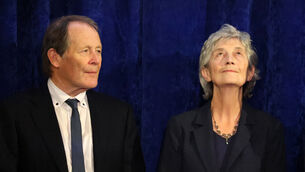Educated women face wider pay gap
It reveals that while the difference in pay in Ireland appears to have decreased in recent times to 9% last year, well below the EU average pay gap of 15%, the figures hide a substantial difference between men and women’s wages in the private sector.
The report says two-thirds of Irish female workers are in four female-dominated occupations: clerical workers, nurses, teachers and personal service workers.
It also shows that the more educated a woman is, the more experience she has and the longer she has worked the greater the pay gap between her and her male counterparts.
The wage differentials were condemned by EU Employment Commissioner Vladimir Spidla, who said the pay gap went well beyond the question of equal pay for equal work.
“One of the main causes is the way women’s competences are valued compared to men’s. Jobs requiring similar qualifications or experience tend to be paid less when they are dominated by women than by men.”
Differences in pay are more than 30% in the 50-59 age group, 7% for the under-30s, more than 30% for those with third-level education, 13% among those with lower level secondary education, as high as 32% for workers with more than 30 years of service in a firm and 22% for those who have worked in a company for one to five years.
The report — by the European Social and Research Institute — shows that in the private sector in firms with more than 10 people, women earned 26% less per hour than men in 2002.
It also reveals women in the poorest paid jobs end up with the poorest pensions.
The report said: “Women are the majority of those on low pay and account for the majority of those at risk of, and experiencing, poverty.
“The fact that the gender pay gap continues to be significant and persistent reflects both the way in which women are penalised in paid employment because of their time spent on care responsibilities and also the undervaluing and underpayment of women’s work.”
Another key factor in understanding the gender wage gap is what the report calls vertical segregation, where women are crowded into the low-paid and low-status end of the jobs hierarchy.
The report identified four ways to close the gap:
* Analysing how current laws could be adapted and raising awareness).
* Fighting the pay gap as an integral part of member states’ employment policies.
* Promoting equal pay among employers, especially through social responsibility.
* Supporting exchange of good practices across the EU and involving the social partners.














